Regulatory Impact Statement for the 2005 Minimum Wage Review
Regulatory Impact Statement for the 2005 Minimum Wage Review
Regulatory Impact Statement for the 2005 Minimum Wage Review
Create successful ePaper yourself
Turn your PDF publications into a flip-book with our unique Google optimized e-Paper software.
Increasing <strong>the</strong> minimum wage can make a small contribution to reducing <strong>the</strong><br />
gender pay gap. For example an increase in <strong>the</strong> minimum wage from $9.50 to<br />
$10.50 will improve <strong>the</strong> gender pay ratio by three tenths of a percentage point<br />
(0.3) to 82.1%.<br />
Of those receiving <strong>the</strong> youth minimum wage, <strong>the</strong> beneficiaries are likely to be<br />
youth who are working while still at school (75% of 16 and 17 year olds are still at<br />
school or in some <strong>for</strong>m of study) and <strong>the</strong>se workers are likely to be in <strong>the</strong> retail<br />
sector (64% of 16 and 17 year olds are employed in <strong>the</strong> retail industry). For<br />
youth, <strong>the</strong> increase in weekly income from an increase in <strong>the</strong> minimum wage is<br />
likely to be small, because <strong>the</strong> majority of young people work short hours.<br />
There may be savings to government through abated income assistance as a<br />
result of increased earned income <strong>for</strong> people in receipt of such assistance<br />
(including Working <strong>for</strong> Families assistance). However, despite abated income<br />
assistance, people will still be better off as a result of <strong>the</strong> increases to <strong>the</strong>ir<br />
wages.<br />
<strong>Statement</strong> of consultation undertaken<br />
Submissions <strong>for</strong> <strong>the</strong> <strong>2005</strong> <strong>Minimum</strong> <strong>Wage</strong> <strong>Review</strong> were received from a number<br />
of organisations reflecting women’s interests (<strong>the</strong> National Advisory Council on<br />
<strong>the</strong> Employment of Women) and worker (New Zealand Council of Trade Unions<br />
and Youth Union Movement) and business interests (Business New Zealand, <strong>the</strong><br />
NZ Retailers Association, The Hospitality Association, <strong>the</strong> Federation of Farmers,<br />
and New Zealand Association of Retail Grocers and Supermarkets and <strong>the</strong> Small<br />
Business Advisory Group). In addition, <strong>the</strong> Department of Labour met separately<br />
with <strong>the</strong> New Zealand Council of Trade Unions, Business New Zealand and <strong>the</strong><br />
Small Business Advisory Group to discuss some of <strong>the</strong> key issues relating to <strong>the</strong>ir<br />
submissions. Submissions representing employer interests, emphasised <strong>the</strong><br />
costs of wage increases (refer above) and sought no or small increases in<br />
minimum wages. Employee representatives recommended large increases in <strong>the</strong><br />
minimum wage, emphasising <strong>the</strong> benefits to low waged workers.<br />
The Treasury, Ministries of Education, Women’s Affairs, Pacific Island Affairs,<br />
Social Development, Economic Development, and Youth Development, Te Puni<br />
Kokiri, Tertiary Education Commission, <strong>the</strong> Office <strong>for</strong> Disability Issues, and <strong>the</strong><br />
Department of <strong>the</strong> Prime Minister and Cabinet have been consulted on <strong>the</strong> <strong>2005</strong><br />
<strong>Minimum</strong> <strong>Wage</strong> <strong>Review</strong>.<br />
The Ministry of Social Development (MSD), <strong>the</strong> Treasury and <strong>the</strong> Ministry of<br />
Economic Development have raised concerns that larger increases in minimum<br />
wage rates, which would directly affect a considerably larger number of workers<br />
than have been affected by previous increases, involve risks of a significant<br />
reduction in employment opportunities, particularly <strong>for</strong> vulnerable groups, and of<br />
wider economic losses. The extent of <strong>the</strong>se potential losses cannot be quantified,<br />
however, <strong>the</strong>se negative effects will be exacerbated if current buoyant economic<br />
and labour market conditions soften.<br />
These risks have been noted in <strong>the</strong> <strong>2005</strong> <strong>Minimum</strong> <strong>Wage</strong> <strong>Review</strong>. The<br />
Department of Labour considers that, given current economic and labour market<br />
conditions, an increase in <strong>the</strong> minimum wage above <strong>the</strong> rate needed to maintain



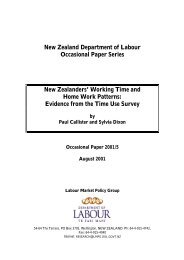

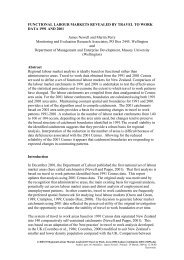
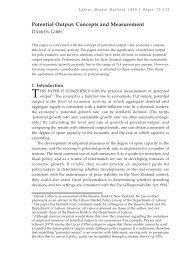

![a note on levels, trends, and some implications [pdf 21 pages, 139KB]](https://img.yumpu.com/27285836/1/184x260/a-note-on-levels-trends-and-some-implications-pdf-21-pages-139kb.jpg?quality=85)

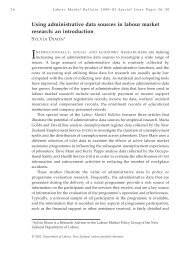
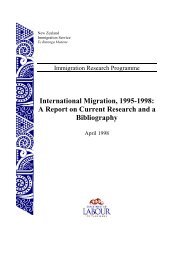
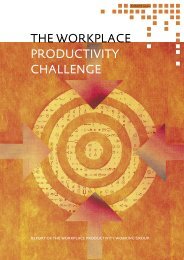
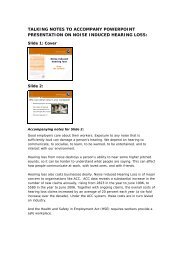
![Labour Market Trends and Outlook - 1996 [pdf 18 pages, 94KB]](https://img.yumpu.com/27285764/1/184x260/labour-market-trends-and-outlook-1996-pdf-18-pages-94kb.jpg?quality=85)

